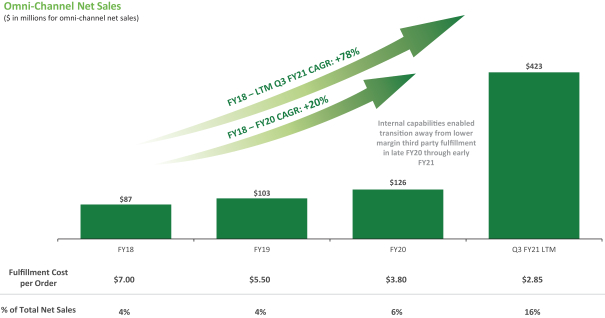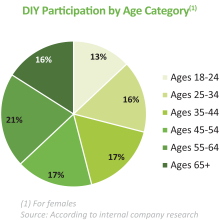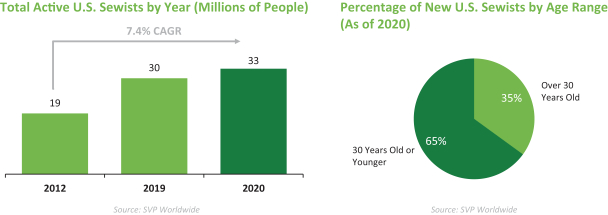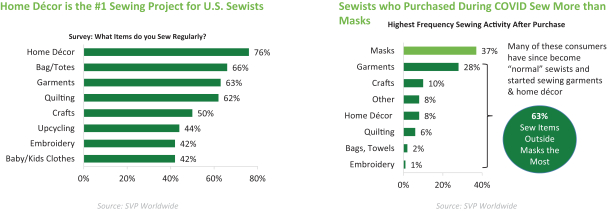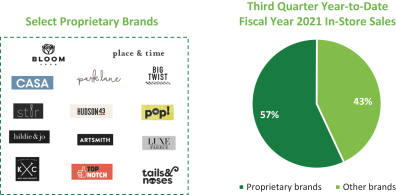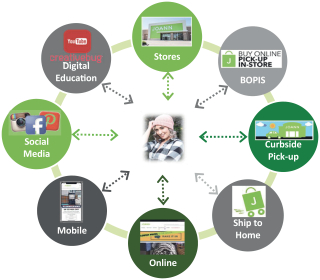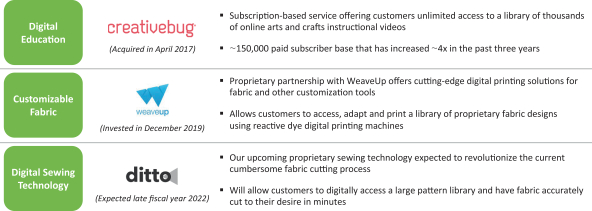PART II
INFORMATION NOT REQUIRED IN PROSPECTUS
Item 13. Other Expenses of Issuance and Distribution
The following table sets forth all the costs and expenses, other than underwriting discounts, payable in connection with the sale of the shares of common stock being registered hereby. Except as otherwise noted, the Registrant will pay all of the costs and expenses set forth in the following table. All amounts shown below are estimates, except the SEC registration fee, the FINRA filing fee and the stock exchange listing fee:
| | | | |
| | | Amount | |
SEC registration fee | | 10,910 | 23,328 | |
FINRA filing fee | | 15,500 | 32,575 | |
Stock exchange listing fee | | * | 210,000 | |
Printing and engraving expenses | | * | 215,000 | |
Legal fees and expenses | | * | 2,000,000 | |
Accounting fees and expenses | | * | 700,000 | |
Transfer agent and registrar fees | | * | 4,000 | |
Miscellaneous expenses | | * | 315,097 | |
| | | | |
Total | | * | 3,500,000 | |
| | |
* | To be filed by amendment.
|
Item 14. Indemnification of Directors and Officers Section 102 of the DGCL allows a corporation to eliminate the personal liability of a director to the corporation or its shareholders for monetary damages for breach of fiduciary duty as a director, except in cases where the director breached his or her duty of loyalty to the corporation or its shareholders, failed to act in good faith, engaged in intentional misconduct or a knowing violation of the law, willfully or negligently authorized the unlawful payment of a dividend or approved an unlawful stock redemption or repurchase or obtained an improper personal benefit. Our certificate of incorporation contains a provision which eliminates directors’ personal liability as set forth above. Our certificate of incorporation and bylaws provide in effect that we shall indemnify our directors and officers to the extent permitted by the DGCL. Section 145 of the DGCL provides that a Delaware corporation has the power to indemnify its directors, officers, employees and agents in certain circumstances. Subsection (a) of Section 145 of the DGCL empowers a corporation to indemnify any director, officer, employee or agent, or former director, officer, employee or agent, who was or is a party, or is threatened to be made a party to any threatened, pending or completed action, suit or proceeding, whether civil, criminal, administrative or investigative (other than an action by or in the right of the corporation), against expenses (including attorneys’ fees), judgments, fines and amounts paid in settlement actually and reasonably incurred in connection with such action, suit or proceeding provided that such director, officer, employee or agent acted in good faith and in a manner he or she reasonably believed to be in, or not opposed to, the best interests of the corporation and, with respect to any criminal action or proceeding, provided that such director, officer, employee or agent had no reasonable cause to believe that his or her conduct was unlawful. Subsection (b) of Section 145 of the DGCL empowers a corporation to indemnify any director, officer, employee or agent, or former director, officer, employee or agent, who was or is a party or is threatened to be made a party to any threatened, pending or completed action or suit by or in the right of the corporation to procure a judgment in its favor by reason of the fact that such person acted in any of the capacities set forth above, against expenses (including attorneys’ fees) actually and reasonably incurred in connection with the II-1
defense or settlement of such action or suit provided that such person acted in good faith and in a manner he or she reasonably believed to be in or not opposed to the best interests of the corporation, except that no indemnification may be made in respect of any claim, issue or matter as to which such person shall have been adjudged to be liable to the corporation unless and only to the extent that the Court of Chancery shall determine that despite the adjudication of liability such person is fairly and reasonably entitled to indemnity for such expenses which the court shall deem proper. Section 145 further provides that to the extent that a director or officer or employee of a corporation has been successful in the defense of any action, suit or proceeding referred to in subsections (a) and (b) or in the defense of any claim, issue or matter therein, he or she shall be indemnified against expenses (including attorneys’ fees) actually and reasonably incurred by him or her in connection therewith; that indemnification provided by Section 145 shall not be deemed exclusive of any other rights to which the party seeking indemnification may be entitled; and the corporation is empowered to purchase and maintain insurance on behalf of a director, officer, employee or agent of the corporation against any liability asserted against him or her or incurred by him or her in any such capacity or arising out of his or her status as such whether or not the corporation would have the power to indemnify him or her against such liabilities under Section 145; and that, unless indemnification is ordered by a court, the determination that indemnification under subsections (a) and (b) of Section 145 is proper because the director, officer, employee or agent has met the applicable standard of conduct under such subsections shall be made by (1) a majority vote of the directors who are not parties to such action, suit or proceeding, even though less than a quorum, or (2) if there are no such directors, or if such directors so direct, by independent legal counsel in a written opinion, or (3) by the shareholders. We have in effect insurance policies for general officers’ and directors’ liability insurance covering all of our officers and directors. In addition, we have entered into indemnification agreements with our directors and officers. These indemnification agreements may require us, among other things, to indemnify each such director or officer for certain expenses, including attorneys’ fees, judgments, fines and settlement amounts incurred by such director or officer in any action or proceeding arising out of his or her service as one of our directors or officers. Item 15. Recent Sales of Unregistered Securities During the three years preceding the filing of this registration statement, we have granted the following stock options under the 2012 Plan to certain of our employees in connection with services provided to us by such persons: in June 2018, we granted stock options to purchase an aggregate of 1,365117,227 shares of our common stock at an exercise price of $865$10.07 per share, of which 86574,286 options were subsequently terminated by their terms; in September 2018, we granted stock options to purchase an aggregate of 65055,822 shares of our common stock at an exercise price of $875$10.19 per share, all of which were subsequently terminated by their terms; in March 2019, we granted stock options to purchase an aggregate of 11,7551,009,529 shares of our common stock at an exercise price of $960$11.18 per share, of which 1,885161,885 options were subsequently terminated by their terms; and in April 2020, we granted stock options to purchase an aggregate of 11,330973,030 shares of our common stock at an exercise price of $100$1.16 per share. Options to purchase an aggregate of 1,248.517107,223 shares of our common stock were exercised at an exercise price of $250$2.91 per share in the three years preceding the filing of this registration statement. These option grants and subsequent exercises do not reflect the stock-split contemplated in connection with this offering. II-2
The issuances of these securities were deemed to be exempt from registration under the Securities Act in reliance upon Section 4(a)(2) of the Securities Act or Rules 506 and 701 promulgated thereunder. The securities were issued directly by the registrant and did not involve a public offering or general solicitation. The recipients of such securities represented their intentions to acquire the securities for investment purposes only and not with a view to, or for sale in connection with, any distribution thereof. Item 16. Exhibits and Financial Statement Schedules (a) Exhibits. | | | Exhibit No. | | Exhibit Description | | | | 1.1** | | Form of Underwriting Agreement. | | | | 3.1** | | Form of Amended and Restated Certificate of Incorporation of the Company, to be effective upon the consummation of this offering. | | | | 3.2** | | Form of Amended and Restated Bylaws of the Company, to be effective upon the consummation of this offering. | | | | 4.1** | | Form of Amended and Restated Shareholders Agreement, to be effective upon the consummation of this offering. | | | | 5.1** | | Opinion of Latham & Watkins LLP. | | | 10.110.1** | | Amended and Restated Credit Agreement, dated October 21, 2016, by and among Jo-Ann Stores, LLC, Needle Holdings LLC and Bank of America, N.A. | | | 10.1.110.1.1** | | First Amendment to Amended and Restated Credit Agreement, dated November 25, 2020, by and among Jo-Ann Stores, LLC, Needle Holdings LLC and Bank of America, N.A. | | | 10.210.2** | | Credit Agreement, dated October 21, 2016, by and among Jo-Ann Stores, LLC, Needle Holdings LLC and Bank of America, N.A. | | | 10.2.110.2.1** | | Incremental Amendment No. 1, dated July 21, 2017, by and among Jo-Ann Stores, LLC, Needle Holdings LLC and Bank of America, N.A. | | | 10.310.3** | | Second Lien Term Credit Agreement, dated May 21, 2018, by and among Jo-Ann Stores, LLC, Needle Holdings LLC and Bank of America, N.A. | | | 10.410.4**# | | Employment Agreement by and between the Company and Wade Miquelon. | | | 10.510.5**# | | Severance Agreement by and between the Company and Wade Miquelon. | | | 10.610.6**# | | Severance Agreement by and between the Company and Matt Susz. | | | 10.710.7**# | | Severance Agreement by and between the Company and Janet Duliga. | | | 10.810.8**# | | Severance Agreement by and between the Company and Christopher DiTullio. | | | 10.910.9**# | | Severance Agreement by and between the Company and Robert Will. | | | 10.1010.10**# | | Stock Option Plan of the Company, dated October 16, 2012. | | | 10.1110.11**# | | Form of Option Agreement under the Stock Option Plan of the Company, dated October 16, 2012. | | | | 10.12**# | | Form of 2021 Equity Incentive Plan of the Company, to be effective upon the consummation of this offering. | | | | 10.13**# | | Non-Employee Director Compensation PolicyForm of Option Agreement under the Company,2021 Equity Incentive Plan. | | | | 10.14**# | | Form of RSU Award Agreement under the 2021 Equity Incentive Plan. | | | | 10.15**# | | Form of RSU Award Agreement under the 2021 Equity Incentive Plan. | | | | 10.16**# | | Form of 2021 Employee Stock Purchase Plan, to be effective upon the consummation of this offering. | | | 10.14* | | Form of Indemnification Agreement. | | | 21.1 | | List of subsidiaries of JOANN Inc. |
II-3
| ** | To be filed by amendment.Previously filed.
|
| # | Indicates management contract or compensatory plan. |
(b) Financial Statement Schedules. Schedules not listed above have been omitted because the information required to be set forth therein is not applicable or is shown in the financial statements or the notes thereto. Item 17. Undertakings The undersigned Registrant hereby undertakes to provide to the underwriters at the closing specified in the underwriting agreement certificates in such denominations and registered in such names as required by the underwriters to permit prompt delivery to each purchaser. Insofar as indemnification for liabilities arising under the Securities Act may be permitted to directors, officers and controlling persons of the Registrant pursuant to the foregoing provisions, or otherwise, the Registrant has been advised that in the opinion of the Securities and Exchange Commission such indemnification is against public policy as expressed in the Securities Act and is, therefore, unenforceable. In the event that a claim for indemnification against such liabilities (other than the payment by the Registrant of expenses incurred or paid by a director, officer or controlling person of the Registrant in the successful defense of any action, suit or proceeding) is asserted by such director, officer or controlling person in connection with the securities being registered, the Registrant will, unless in the opinion of its counsel the matter has been settled by controlling precedent, submit to a court of appropriate jurisdiction the question whether such indemnification by it is against public policy as expressed in the Securities Act and will be governed by the final adjudication of such issue. The undersigned Registrant hereby undertakes that: | | (1) | For purposes of determining any liability under the Securities Act, the information omitted from the form of prospectus filed as part of this registration statement in reliance upon Rule 430A and contained in a form of prospectus filed by the Registrant pursuant to Rule 424(b)(1) or (4) or 497(h) under the Securities Act shall be deemed to be part of this registration statement as of the time it was declared effective. |
| | (2) | For the purpose of determining any liability under the Securities Act, each post-effective amendment that contains a form of prospectus shall be deemed to be a new registration statement relating to the securities offered therein and the offering of such securities at that time shall be deemed to be the initial bona fide offering thereof. |
II-4
SIGNATURES Pursuant to the requirements of the Securities Act of 1933, as amended, the Registrant has duly caused this Registration Statement to be signed on its behalf by the undersigned, thereunto duly authorized, in the City of Hudson, Ohio, on this 16th10th day of February,March, 2021. | | | | JOANN INC. | | | | By: | | /s/ Matt Susz | | Name: | | Matt Susz | | Title: | | Senior Vice President and Chief Financial Officer |
POWER OF ATTORNEY
We, the undersigned officers and directors of JOANN Inc. hereby severally constitute and appoint Wade Miquelon and Matt Susz, and each of them, with full power of substitution and resubstitution and full power to act without the other, as his or her true and lawful attorney-in-fact and agent to act in his or her name, place and stead and to execute in the name and on behalf of each person, individually and in each capacity stated below, and to sign any and all amendments (including post-effective amendments) to this registration statement (or any other registration statement for the same offering that is to be effective upon filing pursuant to Rule 462(b) under the Securities Act of 1933, as amended), and to file the same, with all exhibits thereto and other documents in connection therewith, with the Securities and Exchange Commission, granting unto said attorneys-in-fact and agents, and each of them, full power and authority to do and perform each and every act and thing requisite or necessary to be done in and about the premises, as full to all intents and purposes as he might or could do in person, hereby ratifying and confirming all that said attorneys-in-fact and agents or any of them or their or his substitute or substitutes may lawfully do or cause to be done by virtue hereof.
Pursuant to the requirements of the Securities Act of 1933, as amended, this Registration Statement has been signed below by the following persons on behalf of the Registrant and in the capacities and on the dates indicated. | | | | | Signature | | Title | | Date | | | | /s/ Wade Miquelon Wade Miquelon | | President, Chief Executive Officer and Director (principal executive officer) | | February 16,March 10, 2021 | | | | /s/ Matt Susz Matt Susz | | Senior Vice President, Chief Financial Officer (principal financial and accounting officer) | | February 16,March 10, 2021 | | | | /s/ Darrell Webb*
Darrell Webb | | Director | | February 16,March 10, 2021 | | | | /s/ Jonathan Sokoloff*
Jonathan Sokoloff | | Director | | February 16,March 10, 2021 | | | | /s/ John Yoon*
John Yoon | | Director | | February 16,March 10, 2021 | | | | /s/ Lily Chang*
Lily Chang | | Director | | February 16,March 10, 2021 |
| | | | | | *By: | | /s/ Matt Susz | | Matt Susz | | Attorney-in-Fact |
II-5 | 






